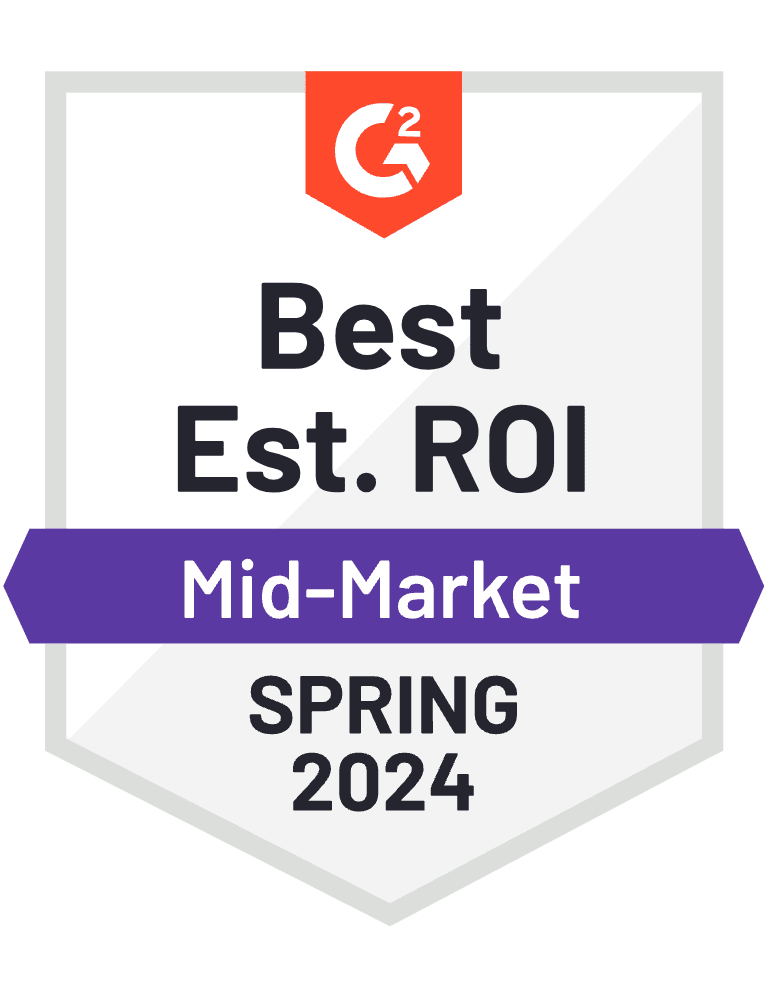Needs assessment template
What if you could build a needs assessment tool to assess and advise anyone, accurately and objectively?
Needs assessments lead to informed decisions, problem-solving, and effective resource allocation.
Pointerpro is the 2-in-1 software that combines assessment building with personalized PDF report generation.
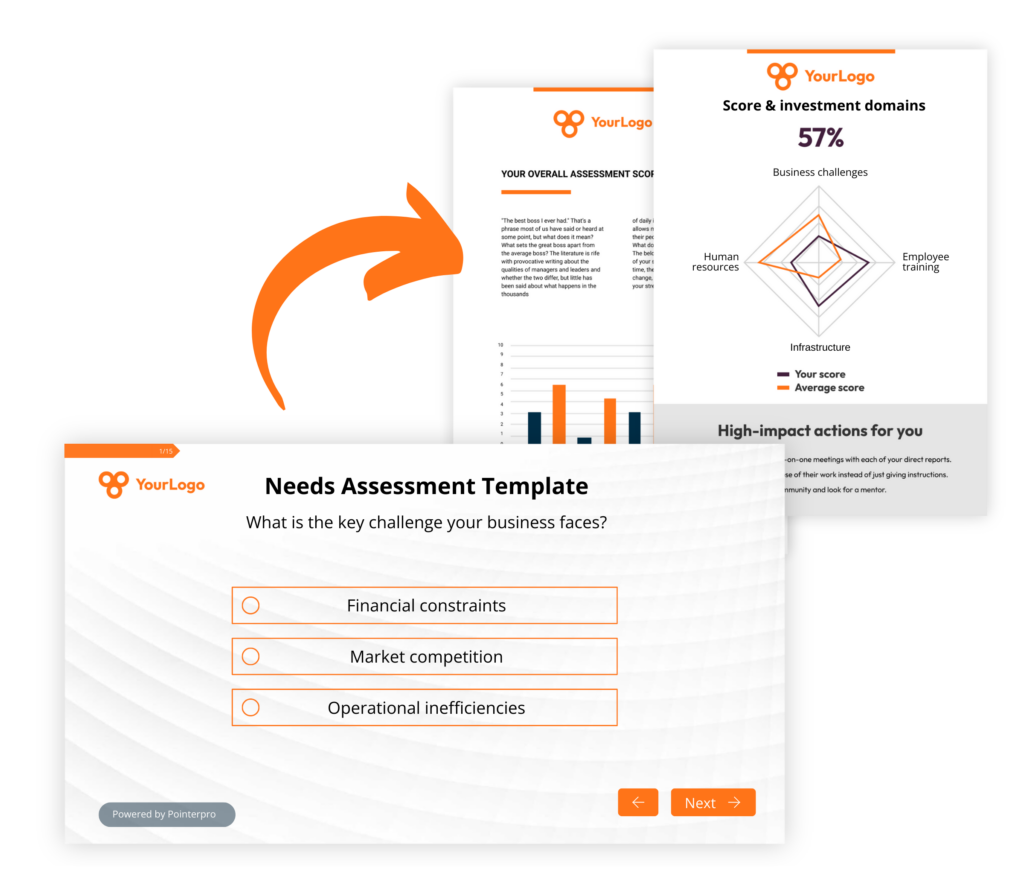
What is a needs assessment?
A needs assessment is a questionnaire used to identify and evaluate the requirements, gaps, and challenges within a particular situation, organization, community, or individual.
The primary purpose of a needs assessment is to determine what is necessary to meet specific goals, address problems, or improve existing conditions. Needs assessments are commonly used in a wide variety of fields, including education, healthcare, social services, business, and community development.
3 reasons to use Pointerpro as a needs
assessment tool?
3 reasons to use Pointerpro as a needs
assessment tool?
Interactive user experience
With the Questionnaire Builder you get to create an engaging assessment. How? With numerous design and layout options, useful widgets and countless question types.
Refined, score-based analysis
Our custom scoring engine helps you quantify different needs in your assessment. The result? An objective and very nuanced assessment of your respondents’ situation.
Automated feedback in PDF
Thanks to your setup in the Report Builder, respondents instantly get a detailed PDF report: with helpful charts, a personalized analysis, and actionable tips.
1.500+ businesses worldwide build assessments with Pointerpro









How to conduct a needs assessment
5 Sequential steps:
Conducting a needs assessment involves a systematic and structured process to identify and address specific needs within an organization, community, or individual. The following are five key steps to conduct a needs assessment:
- Step 1 – Define objectives and purpose: Clearly outline the goals of your needs assessment. What do you aim to achieve? Understanding the purpose will guide the entire process.
- Step 2 – Identify stakeholders and participants: Determine who will be involved in the assessment. Identify key stakeholders and participants whose input is crucial for understanding the needs. This could include employees, customers, or other relevant groups.
- Step 3 – Select an appropriate assessment tool: Choose a digital assessment tool that aligns with the nature of your objectives and the characteristics of your participants. Consider factors such as user-friendliness, the ability to collect and analyze data effectively, and reporting capabilities. The right tool can significantly impact the response rate and success of your needs assessment.
- Step 4 – Collect and analyze data: Distribute your assessment and collect data from the identified participants. Once gathered, analyze the data to identify patterns, trends, and areas of need. This step is crucial for extracting meaningful insights.
- Step 5 – Report findings and recommend actions: Present your findings in a clear and understandable manner. Identify the priority needs and recommend potential solutions or interventions. This step is essential for informing decision-making and action based on the assessment results. Assessment tools like Pointerpro allow you to automate the creation of sophisticated PDF reports with branding, visuals, charts and actionable tips.
It’s important to note that the needs assessment process is not a one-time event; it should be an ongoing and iterative process, especially in dynamic environments. Regular reviews and updates to the assessment are essential to ensure that the identified needs remain relevant and that interventions continue to be effective.
Every situation, domain, industry, or organization is different. A needs assessment template is a great starting point. However, for your assessment to be truly effective be sure to customize to the fullest.
Raise your reputation with Pointerpro
Are you a consultant? Then you build your brand on the basis of your expertise.
With Pointerpro, you consolidate your know-how in a digital assessment tool to generate top-quality PDF reports on autopilot. And they deserve to carry your beautiful design and logo, don’t they?

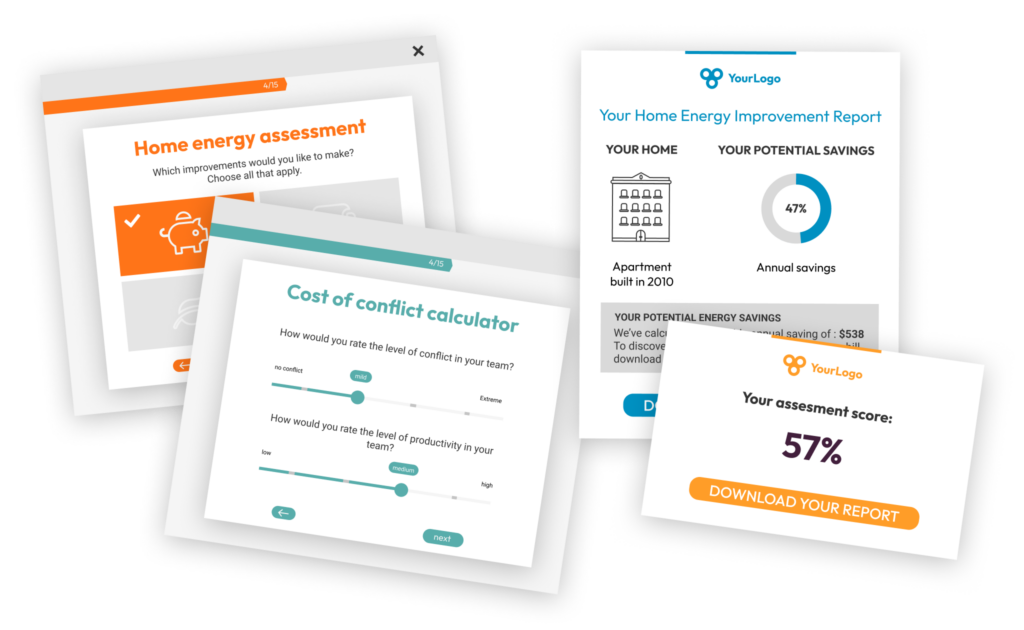
Automated scoring. Better insights
You apply formulas, so respondent input is calculated and measured.
The result? Relevant analyses, automatically molded into visual reports for yourself and each respondent.

40 needs assessment example questions
Here are 40 of the best needs assessment template questions divided into 4 categories:
- 10 training needs assessment example questions
- 10 business needs assessment example questions
- 10 customer needs assessment example questions
- 10 community needs assessment example questions
10 business needs assessment example questions
- What are the primary challenges your business is currently facing?
- How would you rate your organization’s digital readiness?
- Which areas of your business do you believe require process improvement?
- How satisfied are you with your current technology infrastructure?
- In which areas do you think your employees could benefit from additional training?
- What is your organization’s current approach to innovation?
- How effective do you consider your current marketing strategies in reaching your target audience?
- How would you describe your organization’s workplace culture?
- What external factors do you believe pose the greatest threats to your business?
- How well does your business adapt to changing market trends?
These business needs assessment template questions were chosen to comprehensively assess various aspects of a business’s needs. From identifying challenges and areas for improvement to evaluating technology readiness and employee training requirements, the questions cover a broad spectrum.
They delve into organizational culture, innovation, and adaptability to changing market dynamics, providing a holistic understanding of the business’s current state and potential areas for development. The inclusion of external threats and satisfaction levels with key components like technology and marketing further enriches the assessment, offering valuable insights for strategic planning and decision-making.
10 customer needs assessment example questions
- How would you rate the overall satisfaction with our product/service?
- How often do you use our product/service?
- What features do you find most valuable in our product/service?
- On a scale of 1 to 10, how likely are you to recommend our product/service to a friend or colleague?
- How responsive do you find our customer support?
- What challenges do you face when using our product/service?
- Which channels do you prefer for receiving updates and information about our product/service?
- How would you rate the ease of use of our product/service?
- What additional features or improvements would you like to see in our product/service?
- How well does our product/service meet your specific needs?
These customer needs assessment template questions are designed to cover a range of aspects, from overall satisfaction to specific challenges and suggestions for improvement. A mix of closed-ended and open-ended answer options would provide quantitative data as well as valuable qualitative insights.
The goal is to gather comprehensive feedback to understand customer needs, preferences, and areas for enhancement.
10 community needs assessment example questions
- What do you believe are the most pressing issues facing our community?
- How connected do you feel to your neighbors and community members?
- In your opinion, what community services are currently lacking or insufficient?
- How would you rate the safety and security of our community?
- Which age groups or demographics do you think require targeted support within our community?
- How accessible do you find information about community events and resources?
- What environmental concerns do you believe are affecting our community?
- How inclusive and diverse do you perceive community events and activities to be?
- Which types of educational programs or workshops would you like to see offered in our community?
- How satisfied are you with the overall quality of life in our community?
These community needs assessment template questions were crafted to comprehensively assess the needs and concerns of a community. They cover a range of topics, including social connections, safety, accessibility of information, environmental considerations, and satisfaction with the overall quality of life. By addressing specific services, demographics, and potential areas for improvement, these questions aim to provide a well-rounded understanding of the community’s needs, ultimately guiding future initiatives and resource allocation.
What Pointerpro clients are saying




4 types of needs to address in a needs assessment template
To ensure the effectiveness of any needs assessment template, it is essential to recognize and understand the multifaceted nature of needs. The four distinct types of needs below offer a comprehensive framework for analysis.
Each type provides unique insights into the complexities of a given context, contributing to a more nuanced and informed decision-making process. A holistic understanding of needs is paramount for designing targeted and impactful interventions.
- Felt needs (What people say they need): These are perceived needs and desires that individuals or a community express verbally. They reflect the subjective opinions and self-reported requirements of the participants. Felt needs are often the starting point for understanding the immediate concerns of the target population. To identify felt needs it can be useful to integrate open-ended questions in your needs assessment. Do consider that answers to open-ended questions are more difficult to quantify for your analysis.
- Expressed needs (Expressed in action): These needs are identified by observing the actions, behaviors, or choices of individuals or groups. Instead of relying solely on what people say, this aspect looks at what they (would) actually do. Though a needs assessment is no direct observation of actions, it is perfectly possible and effective to use scenario-based questions and observe patterns in the chosen answer options.
- Normative needs (Defined by experts): Normative needs are determined by experts, professionals, or established standards in a particular field. These needs are based on expert opinions, industry best practices, or guidelines. In your needs assessment, you can include criteria derived from normative sources. This ensures that your evaluation aligns with established benchmarks, making it more robust and credible.
- Comparative needs (Group comparison): Comparative needs involve assessing and comparing the needs of different groups or communities. This type of analysis helps identify disparities or variations in needs across various demographic or geographic categories. Understanding comparative needs allows for targeted interventions and resource allocation based on the specific requirements of different groups. To derive comparative needs from your assessment, it’s important to choose an assessment tool with aggregated reporting features.
Who should use a needs assessment (template)?
A well-conducted needs assessment is crucial for making informed decisions, optimizing resource allocation, and ensuring that interventions or solutions effectively address the identified needs. Here’s a concrete list of organizations that benefit from building a needs assessment template:
- Educational institutions to determine curriculum changes or resource allocation.
- Healthcare organizations to identify gaps in patient care or service delivery.
- Nonprofits and community organizations to address social issues and community development.
- Businesses to identify skill gaps or operational improvements.
- Government agencies to inform policy development and resource allocation.
A well-conducted needs assessment is crucial for making informed decisions, optimizing resource allocation, and ensuring that interventions or solutions effectively address the identified needs.
10 commonly used needs assessment templates
- Health Needs Assessment Template:
- Objective: Identify health-related needs and concerns
- Components: Evaluate healthcare access, wellness programs, and disease prevention initiatives.
- Educational Needs Assessment Template:
- Objective: Evaluate educational requirements of learners or institutions.
- Components: Address curriculum development, teacher training, and resource allocation.
- Environmental Needs Assessment Template:
- Objective: Examine environmental challenges and requirements.
- Components: Assess pollution, conservation efforts, and sustainable development.
- Technology Needs Assessment Template:
- Objective: Evaluate technological requirements of organizations or individuals.
- Components: Assess software and hardware infrastructure, cybersecurity, and digital literacy.
- Cultural Needs Assessment Template:
- Objective: Explore cultural preferences, values, and requirements.
- Components: Inform initiatives related to cultural preservation, awareness, and inclusivity.
- Safety Needs Assessment Template:
- Objective: Identify safety hazards and concerns.
- Components: Develop safety protocols, emergency response plans, and training programs.
- Economic Needs Assessment Template:
- Objective: Evaluate economic conditions and requirements.
- Components: Address issues related to employment, income levels, and economic development strategies.
- Social Needs Assessment Template:
- Objective: Examine social dynamics and challenges within a community or group.
- Components: Address social support, inclusion, and community cohesion.
- Customer Needs Assessment Template:
- Objective: Understand customer needs and preferences.
- Components: Inform product or service development, marketing strategies, and customer satisfaction initiatives.
- Government and Public Policy Needs Assessment Template:
- Objective: Evaluate needs and priorities of the public.
- Components: Inform the development of government policies, programs, and initiatives addressing societal challenges.
Each type of needs assessment has a specific objective tailored to its domain, and the components provide a more detailed breakdown of the areas that are examined within each assessment.
An award-winning platform for consultants, coaches, HR managers, and marketers
Gap analysis vs needs analysis
While both gap analysis and needs assessment are related to identifying and addressing gaps or deficiencies, they have distinct focuses and purposes in the context of organizational development. Here’s a breakdown of the key differences:
Needs assessment:
- Focus: A needs assessment is a systematic process that aims to identify and understand the current needs and challenges within a specific context, such as an organization, community, or individual.
- Objective: The primary goal of a needs assessment is to provide a comprehensive understanding of the existing state, informing decision-making and resource allocation to address identified needs.
- Process: It involves gathering data, analyzing current conditions, and determining the gaps between the current state and the desired state.
Gap analysis:
- Focus: Gap analysis, on the other hand, specifically targets the discrepancies or gaps between the current state (where the organization or system is now) and the desired state (where it wants to be).
- Objective: The main goal of a gap analysis is to identify the differences between current performance or conditions and the ideal or expected performance, helping to set specific improvement goals.
- Process: It involves comparing existing processes, performance metrics, or conditions with established standards, benchmarks, or desired outcomes.
In summary, while a needs assessment provides a broader understanding of the overall needs and challenges, a gap analysis narrows its focus to the discrepancies between the current and desired states. A needs assessment often serves as the initial step in recognizing what areas require attention and action, and a gap analysis follows to pinpoint specific areas where improvements or changes are necessary to bridge the gap. They are complementary processes that, when used together, contribute to effective organizational development and decision-making.
Use a needs assessment template or build it custom?
Developing a custom needs assessment offers a myriad of advantages over adhering to a pre-designed needs assessment template. While needs assessment templates are a great and structured starting point, tailoring the assessment to the unique context and objectives of a particular situation ensures a more accurate and meaningful analysis. Here are several reasons why a custom needs assessment is often a superior approach:
- Contextual relevance: One of the primary advantages of a custom needs assessment is its ability to align closely with the specific context and nuances of the situation. Every organization, community, or individual has unique characteristics, challenges, and goals. A template, by its nature, may lack the flexibility to capture these distinct aspects adequately. Customization ensures that the assessment is directly relevant to the environment it is intended to serve, making the findings more applicable and actionable.
- Tailored objectives: Custom needs assessments allow for the precise definition of objectives based on the goals and priorities of the entity undergoing the assessment. A template, being a generic tool, may not address specific objectives or might include irrelevant components. Customization ensures that the assessment focuses on what truly matters, enhancing its effectiveness in guiding decision-making and resource allocation.
- In-depth exploration: Developing a custom needs assessment permits a more thorough exploration of the unique factors influencing the situation. Templates often provide a standardized set of questions or criteria, limiting the depth of analysis. Custom assessments can include questions and methodologies that delve into the intricacies of the context, providing a richer understanding of needs, challenges, and potential solutions.
- Stakeholder engagement: Custom assessments encourage active involvement of stakeholders in the design process. Engaging key participants ensures that their perspectives, concerns, and insights are integrated into the assessment. This participatory approach fosters a sense of ownership and relevance, making the assessment more likely to be embraced by those it directly impacts.
- Flexibility and adaptability: The dynamic nature of organizations and communities demands flexibility in assessment tools. Custom needs assessments can be adjusted and refined as the situation evolves or as new insights emerge. Templates, by their rigid structure, may become obsolete or fail to capture changing needs over time. Customization ensures adaptability and longevity in addressing the evolving landscape of challenges.
- Enhanced validity and reliability: A custom needs assessment is crafted with a deep understanding of the specific characteristics and dynamics of the entity being assessed. This tailored approach enhances the validity and reliability of the assessment, ensuring that the findings accurately reflect the true needs and conditions. A needs assessment template, lacking this specificity, may produce results that are less accurate or applicable to the unique context.
- Ownership and buy-in: Custom assessments foster a sense of ownership and buy-in from stakeholders. When individuals or groups recognize that the assessment is designed specifically for their needs and challenges, they are more likely to engage actively in the process and embrace the findings. This sense of ownership contributes to the successful implementation of recommended interventions or changes.
Beyond needs assessment! These professionals use Pointerpro:
Consultants & Coaches
Attract, onboard, and guide more customers in less time.
Human Resources
Gauge candidate or employee sentiment and skills, and spark progress.
Marketers
Shorten your sales cycle and boost online lead conversion.
By offering the convenience of online assessments. Personalized advice in a downloadable PDF report is only one click away for the respondent.
Grow exponentially by distributing and selling your advisory services as a digital product.
With engaging, interactive and nuanced online assessments. Personal objectives, next steps or development plans instantly emerge in the individual PDF reports.
Use aggregate response data to automate 360 feedback and benchmark reports – and involve managers in distribution.
By guiding customers to relevant solutions with interactive online assessments. Every respondent gets personalized advice and call-to-actions in a branded PDF report.
Use aggregate response data to better understand your audience and inform your business or marketing strategy.
Create your first needs assessment today
You may also be interested in
Recommended reading
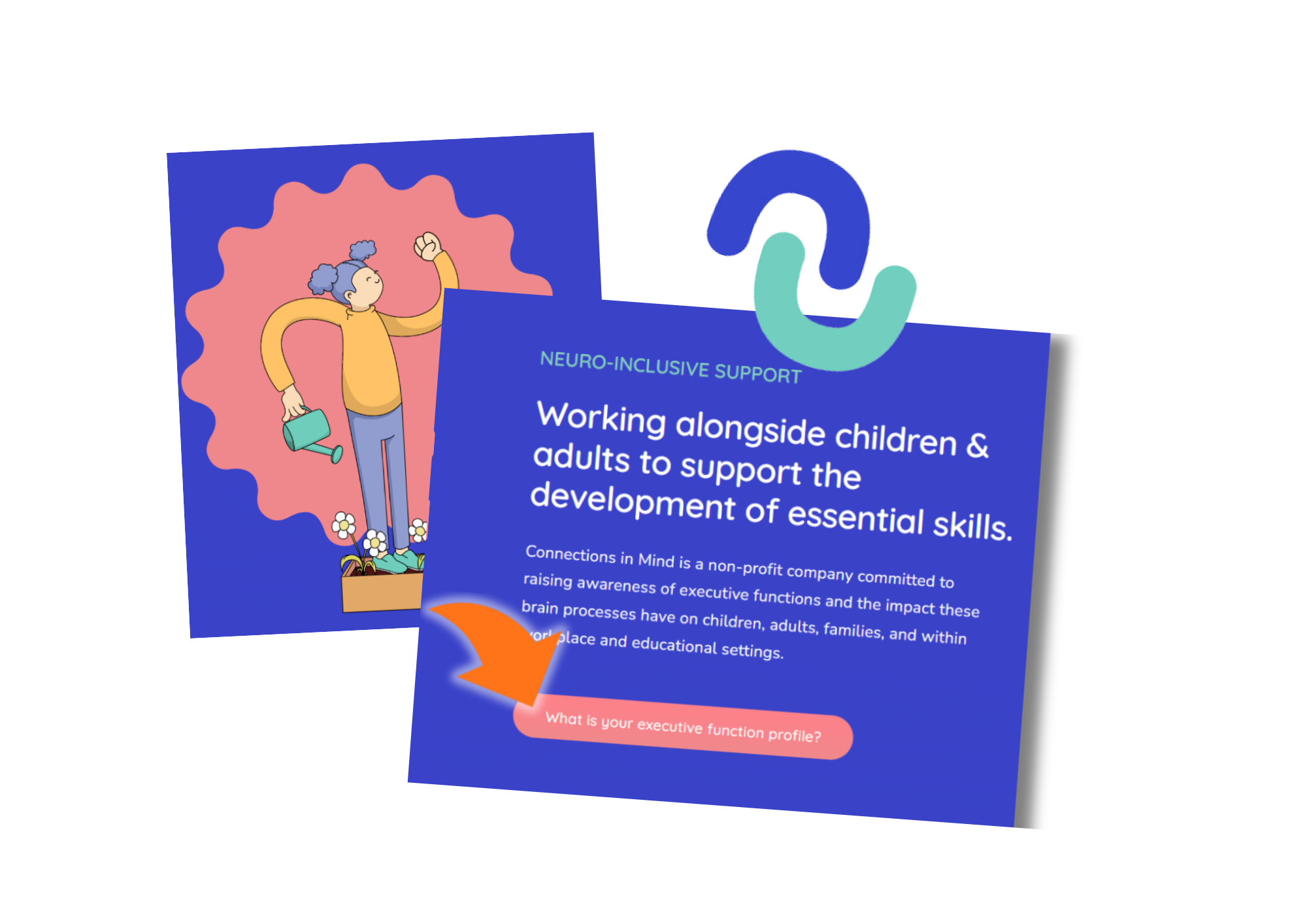
How Connections In Mind benefits the community interest through a digital mindset and a longitudinal assessment
The fact that communities benefit from diversity should not be news to anybody. One type of diversity you may not

Vlerick Business School digitalizes entrepreneurship development with Pointerpro [case study]
What do a top-tier international business school based in the capital of Europe and Pointerpro have in common? At the
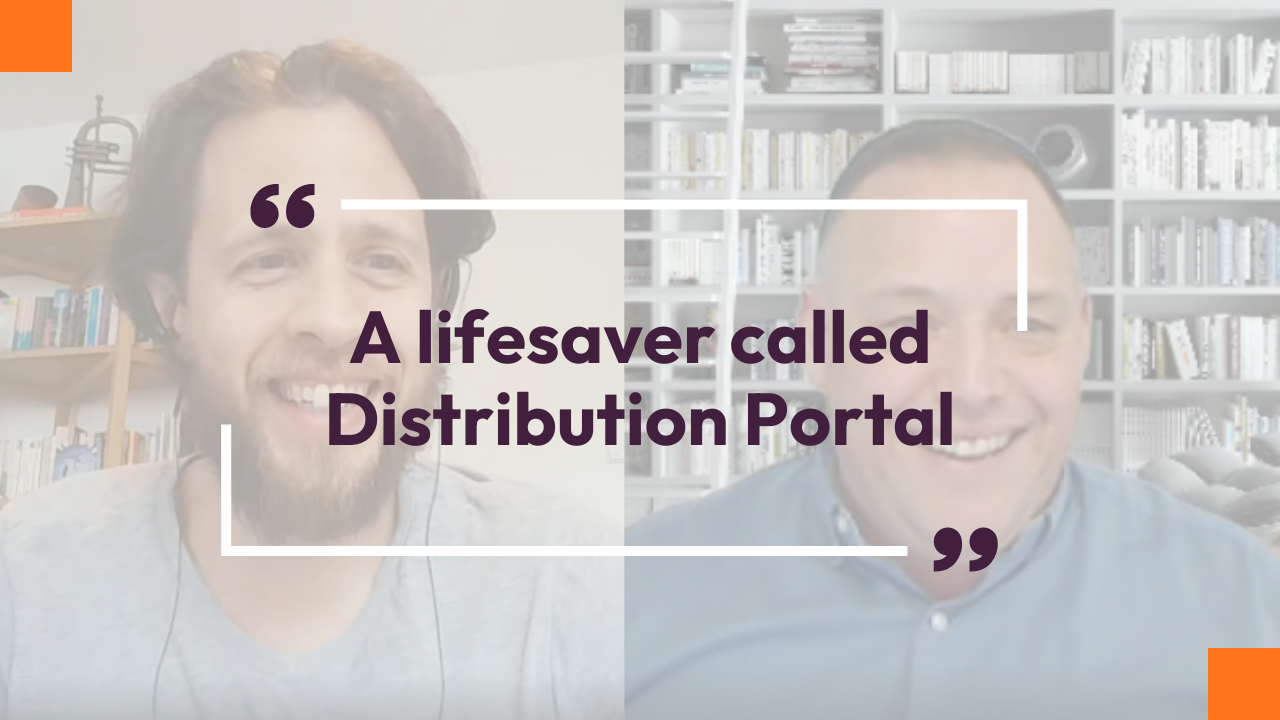
Attain Global: How to do psychometric tests right and build a cutting-edge international business [case study]
In many countries worldwide, the pursuit of skillful and engaged employees is not so much a war on talent as



